Books by Anita Kozubová
Edited books by Anita Kozubová
ultra velum temporis Venované Jozefovi Bátorovi k 70. narodeninám Slovenská archeológia -Suppleme... more ultra velum temporis Venované Jozefovi Bátorovi k 70. narodeninám Slovenská archeológia -Supplementum 1 Recenzovaný časopis / Peer-reviewed journal Hlavný redaktor / General editor Gabriel Fusek Predseda redakčnej rady / Editorial board chairman Matej Ruttkay Redakčná rada / Editorial board
Monographic papers by Anita Kozubová

Študijné zvesti Archeologického ústavu Slovenskej akadémie vied, 2024
The paper deals with the cultural and spatial evaluation of numerous finds of the eastern type fr... more The paper deals with the cultural and spatial evaluation of numerous finds of the eastern type from Transdanubia, dated to the Ha D–Lt A stages. The main point of our interest was to provide a complex overview of these finds, focused mainly on the provenance, chronological aspect and possible interpretations of their occurrence in Transdanubia. Based on a detailed analysis of finds of the eastern type, it was possible in terms of their origin to determine four groups of finds in Transdanubia – finds of the Vekerzug culture from the first group and older types of arrowheads with an outer socket from the fourth group are most frequent. The occurrence of finds of the eastern type in Transdanubia shows similar tendencies as in the neighbouring regions of the Eastern Hallstatt culture, especially in Moravia. Both regions are special in terms of the frequency and type variability of Vekerzug finds. Especially arrowheads with an inner socket point to a new tradition in production of efficient weapon types in East-Central Europe and are, above all, an indicator of technological innovations. There are several concentrations of Vekerzug finds in Transdanubia: in its north-western and south-eastern parts, around Lake Balaton and in the Danube Bend area. The frequent presence of Vekerzug finds across Transdanubia shows the active contacts and peaceful interactions between the Vekerzug culture and the cultural regions to the west. We can consider the expansion of Vekerzug people into the western Budapest area and its surroundings. However, in other parts of Transdanubia, Vekerzug finds are evidence for cultural contacts of the local Hallstatt population with the Vekerzug culture.

Materiały i Sprawozdania Rzeszowskiego Ośrodka Archeologicznego 44, Jul 31, 2024
‘Gildet women’ – remarks on appliqués made of precious metals in the Vekerzug culture: This study... more ‘Gildet women’ – remarks on appliqués made of precious metals in the Vekerzug culture: This study deals with the findings of appliqués made of precious metals from the sites of the Vekerzug culture in Eastern Hungary and Southwestern Slovakia. Except for one hoard, the appliqués come from ten graves. Providing a more complex overview of these findings was at the center of our interest, focusing mainly on cultural and spatial analysis, their possible relation to specific gender or age categories of the burial individuals, and the importance of the appliqués for the costumes of the Vekerzug culture. All of their variants are unique to the Vekerzug culture and have no analogies in the neighboring regions, including the East European steppes and forest-steppes. Most of the appliqués in the Vekerzug culture are dated to the Late Hallstatt period or the Early La Tène period. The appliqués were found in the graves of adult females. Their costumes do not differ from the female costumes of the Vekerzug culture without appliqués. Most of the appliqués were found in richly furnished female graves, some of which are among the richest in the Vekerzug culture. Additionally, other objects made of precious metals in the Vekerzug culture, such as head ornaments and beads, were almost exclusively reserved for women.
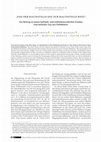
In: Slovenská archeológia LXX-2, 2022
From the East Stop to the West Stop. A Contribution to New Hallstatt and Early La Tène Finds of t... more From the East Stop to the West Stop. A Contribution to New Hallstatt and Early La Tène Finds of the Eastern Type from Eastern Bohemia. The article deals with the cultural and spatial evaluation of new finds of the eastern type from the Hallstatt and Early La Tène periods discovered in the previous five years in Eastern Bohemia. The main point of our interest was to provide the complex overview of these finds, focused mainly on the provenience, chronological aspect and possible interpretations of their occurrence in Bohemia. Based on a detailed analysis of finds of the eastern type from the whole Bohemia, it was possible in terms of their origin to determinate four groups of finds, including those of the Vekerzug culture, and re-evaluate the chronological framework of the researched issues as well as interpretive aspects of their occurrence not only in Bohemia, but also in the broader Central European context. The occurrence of finds of the eastern type in Bohemia shows similar tendencies as in the neighbouring regions of the Eastern Hallstatt culture, especially in Moravia.
Keywords: Bohemia, Hallstatt and Early La Tène periods, Hallstatt culture, Vekerzug culture, weapons, jewellery, wheel-turned pottery, eastern contacts.

Materiały i Sprawozdania Rzeszowskiego Ośrodka Archeologicznego 42, 2021
This study deals with graves of Vekerzug culture, which contained weapons and horse harness. Thes... more This study deals with graves of Vekerzug culture, which contained weapons and horse harness. These graves reflect an evident social differentiation of Vekerzug society. Special attention in the study was paid to the most accurate geographic and cultural determination of the origin of individual weapon types and horse harness components in the context of new knowledge about Vekerzug culture and answering the question to what extent these finds reflect its interregional contacts. Important is also definition of possible armament schemes of Vekerzug culture and their comparison with armament schemes in the neighbouring cultural regions, especially with the forest-steppe Western Podolian group, Ciumbrud culture and Ferigile culture. Cultural and spatial analyses of individual types of weapons and horse harness as well as of the armament schemes of Vekerzug culture show that the problem of interregional contacts of this culture, mainly the eastern ones, must be considered more differentially than it has been previously presented in scientific literature. At the same time, they confirm the recent knowledge that the effect of eastern influences on Vekerzug culture is in scientific literature without a reason constantly overestimated.
Keywords: Eastern Hungary, Southern Slovakia, Hallstatt and Early La Tène periods, Vekerzug culture, weapons, horse harness, graves, armament schemes, interregional contacts, innovations.

In: Musaica archaeologica 6/1–2, 2021
Abstract: Not only a head ornament: an extraordinary Hallstatt period find from Smržice-Trávníky ... more Abstract: Not only a head ornament: an extraordinary Hallstatt period find from Smržice-Trávníky u ostrova (Central Moravia). This study deals with the cultural and spatial analysis of finds discovered in the previous five years during surface prospecting in Smržice-Trávníky u ostrova (Prostějov district) on the area of a presumed settlement of the Platěnice group of the East Hallstatt culture. In the set of the analysed items, in addition to local ceramics of the Platěnice group and several metal objects of the Hallstatt type (rare type of a bronze boat-shaped fibula, a bronze pin with a hemispherical head and a ribbed neck, a bronze conical arrowhead of circular cross-section) dating to Ha C2 and Ha D1, there were also bronze arrowheads of the eastern type (with an inner socket), which demonstrate the connections between the Prostějov region and the Vekerzug culture during the Ha D period. An exceptional find of a ceramic fragment of a local (Platěnice group) vessel decorated with impressions of small nail-shaped earrings probably from Ha D1 indicates, on the contrary, the contacts of Central Moravia with the late phase of the Tarnobrzeg Lusatian culture of Southeast Poland. It is the Prostějov region, where we observe a significant concentration of objects of the eastern type during the Hallstatt period. Therefore, special attention in the study was paid to Hallstatt period finds of the eastern type with the focus on the provenience, chronological aspect and interpretation of their occurrence in Moravia as well as in the neighboring regions.
Keywords: Moravia, Hallstatt period, East Hallstatt culture, Vekerzug culture, jewellery, weapons, pottery, finds of the eastern type, interregional contacts
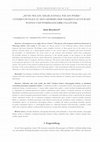
In: Musaica archaeologica 4/2, 27-109, 2019
Abstract: „Courageous as an eagle, fast as a horse.” The graves with weapons and horse harnesses ... more Abstract: „Courageous as an eagle, fast as a horse.” The graves with weapons and horse harnesses in Vekerzug culture: case study. In this paper, we discuss graves of the Vekerzug culture, which contained weapons and horse harnesses. Providing a more complex overview of these graves was at the centre of our interest, focused mainly on a culural-spatial analysis of the various types of weapons and horse harnesses, the possibility of identification the social status of the warriors and horsemen within their community, the possible relation of weapons and horse harnesses to the specific gender or age category of the buried individuals and identifying the factor, which affected the composition of these graves and the mutual combination of different types of weapons and horse harnesses. The graves with weapons and horse harnesses are key to assessing the question of the nature and intensity of the eastern influences in the formation of the Vekerzug culture. The results of their analysis confirm the previous conclusions, that in the research of the Early Iron Age the share of the eastern influences in the Vekerzug culture is still overestimated, while the western and southern influences as well as the local traditions of the Late Bronze and Early Iron Age are underestimated.
Keywords: East Hungary, Southwest Slovakia, Hallstatt and Early La Tène Periods, Vekerzug culture, graves with weapons and horse harnesses, grave accesories, funerary customs, schemata of weaponry, male costumes, social aspect, innovations
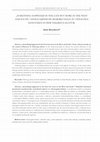
In: Musaica archaeologica 4/1, 55-185, 2019
Abstract: „Something happened in the East but more in the West and South.“ Some critical remarks ... more Abstract: „Something happened in the East but more in the West and South.“ Some critical remarks on the eastern influences in Vekerzug culture. In the study presented, we discuss the eastern influences in the Vekerzug culture based on a detailed analysis of its material sources and some selected aspects, such as funerary customs and costumes. In the research of the Early Iron Age the eastern influences in the Vekerzug culture tradi-tionally are not only overestimated in comparation to the influences of the Eastern Hallstatt culture and the Cen-tral and Eastern Balkans but also incorect as scythian interpreted. The participation of the eastern influences from the East European forest-steppe zone as well as from the North Caucasus in the formation of the material sources of the Vekerzug culture is indeed not negligible, but it is not so significant and strong that it is possible to indicate the Vekerzug culture as Eastern, Skythoid or even Scythian culture.Vekerzug culture as a culture of the Hallstatt Period was not part of the sphere of influence of the eastern elites, but it was itself a driving force in the cultural and historical development of the Iron Age in the eastern part of Central Europe and she had been in the strong integration process with the Eastern Hallstatt culture. The foreign influences were selectively absorbed by the Vekerzug culture, selectively modified into local and selectively passed on into the neighboring cultural regions.
Keywords: Vekerzug culture, Eastern influences, Hallstatt and Early La Tène Periods, analysis of finds, funerary cu-stoms, costumes, innovations, interregional contacts
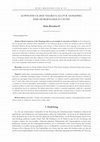
In: Musaica archaeologica, 3/1, 13-63 , 2018
Abstract: Head ornaments of the Vekerzug cultur on an example of cemeteries in Chotín. In the stu... more Abstract: Head ornaments of the Vekerzug cultur on an example of cemeteries in Chotín. In the study presented, we discuss head ornaments from cementeries of the Vekerzug culture in Chotín IA und IB in south-west Slovakia (Komárno District). Bronze hairrings belong to the category of head ornaments whose typology is less varied, and are a typical feature mainly of the costumes of adult women. Providing a more complex overview of the hairrings was at the centre of our interest, focused mainly on a cultural-spatial analysis, the possibility of identification the status of the hairring wearers within their community and society, their possible relation to the specific gender or age category of the buried individuals and identifying the factor which affected the composition of each costume with hairrings. Based on the occurrence of hairrings together with other categories of decorations for the body and parts and decorations of clothing, it was possible to define several types of female costumes on both cemeteries, which only partially reflects the social differentiation of the community which buried its members in Chotín.
Keywords: cemeteries in Chotín, Hallstatt Period, Early La Tène Period, hairrings, Vekerzug Culture, grave accessories, graves with hairrings, female costumes, social aspect

In: Zborník Slovenského národného múzea CIII, Archeológia 19, 65-130 , 2009
Vekerzugská kultúra (ďalej VK) ako jeden z hlavných a zároveň špecifických prejavov v kultúrno-hi... more Vekerzugská kultúra (ďalej VK) ako jeden z hlavných a zároveň špecifických prejavov v kultúrno-historickom vývoji mladšej a neskorej doby halštatskej a včasnej doby laténskej v Karpatskej kotline vykazuje najmä v materiálnej náplni polygenetický a synkretický charakter. Uvedené konštatovanie je determinované jednak nejednotným kultúrnym podložím na celom území jej rozšírenia, jednak kontaktmi so susednými archeologickými kultúrami so samostatným kultúrnym vývojom, často odlišným od vývoja VK. Na formovaní celkového obrazu VK sa rôznou mierou intenzity podieľali pamiatky, ktoré môžeme spájať so severopontsko-kaukazským kultúrnym prostredím, s územím centrálneho a východného Balkánu, s východohalštatskou kultúrnou oblasťou a pamiatky, ktoré sú špecifické iba pre VK a majúce tak preukázateľne lokálny charakter (Kozubová 2008, 49).
Papers by Anita Kozubová

Materiały i Sprawozdania Rzeszowskiego Ośrodka Archeologicznego 43, 2022
Abstract: This study deals with the finds of fibulae from the Hallstatt period sites of the Veker... more Abstract: This study deals with the finds of fibulae from the Hallstatt period sites of the Vekerzug culture from Eastern Hungary and Southern Slovakia. The majority of the fibulae come from graves, the rest are either stray or settlement finds. Providing a more complex overview of the fibulae was at the centre of our interest, focused mainly on a cultural and spatial analysis, their possible relation to the specific gender or age category of the burial individuals and on possible importance of the fibulae for the costumes of the Vekerzug culture. Two main origin groups of the fibulae were identified, namely the fibulae of the Hallstatt type and the fibulae of Balkan origin. The fibulae were predominantly found in the graves of adult females. Their costumes do not differ from the female costumes of the Vekerzug culture without fibulae.
Keywords: Eastern Hungary, Southern Slovakia, Hallstatt and Early La Tène periods, Vekerzug culture, fibulae, costumes, interregional contacts, mobility
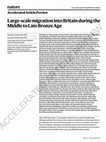
by Martina Blečić Kavur, Viktória Kiss, Domagoj Perkić, Anita Kozubová, Ian Armit, Morana Causevic Bully, Matija Črešnar, Manuel Fernández-Götz, Károly Tankó, JOSIP BURMAZ, Joško Zaninović, Katalin Almássy, Marko Dizdar, Gábor Ilon, Jean Roefstra, Michelle Gamble, and Jos Kleijne Nature, 2021
By: Nick Patterson, Michael Isakov, Thomas Booth, Lindsey Büster, Claire-Elise Fischer, Iñigo Ola... more By: Nick Patterson, Michael Isakov, Thomas Booth, Lindsey Büster, Claire-Elise Fischer, Iñigo Olalde, Harald Ringbauer, Ali Akbari, Olivia Cheronet, Madeleine Bleasdale, Nicole Adamski, Eveline Altena, Rebecca Bernardos, Selina Brace, Nasreen Broomandkhoshbacht, Kimberly Callan, Francesca Candilio, Brendan Culleton, Elizabeth Curtis, Lea Demetz, Kellie Sara Duffett Carlson, Daniel M. Fernandes, M. George B. Foody, Suzanne Freilich, Helen Goodchild, Aisling Kearns, Ann Marie Lawson, Iosif Lazaridis, Matthew Mah, Swapan Mallick, Kirsten Mandl, Adam Micco, Megan Michel, Guillermo Bravo Morante, Jonas Oppenheimer, Kadir Toykan Özdoğan, Lijun Qiu, Constanze Schattke, Kristin Stewardson, J. Noah Workman, Fatma Zalzala, Zhao Zhang, Bibiana Agustí, Tim Allen, Katalin Almássy, Luc Amkreutz, Abigail Ash, Christèle Baillif-Ducros, Alistair Barclay, László Bartosiewicz, Katherine Baxter, Zsolt Bernert, Jan Blažek, Mario Bodružić, Philippe Boissinot, Clive Bonsall, Pippa Bradley, Marcus Brittain, Alison Brookes, Fraser Brown, Lisa Brown, Richard Brunning, Chelsea Budd, Josip Burmaz, Sylvain Canet, Silvia Carnicero-Cáceres, Morana Čaušević-Bully, Andrew Chamberlain, Sébastien Chauvin, Sharon Clough, Natalija Čondić, Alfredo Coppa, Oliver Craig, Matija Črešnar, Vicki Cummings, Szabolcs Czifra, Alžběta Danielisová, Robin Daniels, Alex Davies, Philip de Jersey, Jody Deacon, Csilla Deminger, Peter W. Ditchfield, Marko Dizdar, Miroslav Dobeš, Miluše Dobisíková, László Domboróczki, Gail Drinkall, Ana Đukić, Ceiridwen J. Edwards, Michal Ernée, Christopher Evans, Jane Evans, Manuel Fernández-Götz, Slavica Filipović, Andrew Fitzpatrick, Harry Fokkens, Chris Fowler, Allison Fox, Zsolt Gallina, Michelle Gamble, Manuel R. González Morales, Borja González-Rabanal, Adrian Green, Katalin Gyenesei, Diederick Habermehl, Tamás Hajdu, Derek Hamilton, James Harris, Chris Hayden, Joep Hendriks, Bénédicte Hernu, Gill Hey, Milan Horňák, Gábor Ilon, Eszter Istvánovits, Andy M. Jones, Martina Blečić Kavur, Kevin Kazek, Robert A. Kenyon, Amal Khreisheh, Viktória Kiss, Jos Kleijne, Mark Knight, Lisette M. Kootker, Péter F. Kovács, Anita Kozubová, Gabriella Kulcsár, Valéria Kulcsár, Christophe Le Pennec, Michael Legge, Matt Leivers, Louise Loe, Olalla López-Costas, Tom Lord, Dženi Los, James Lyall, Ana B. Marín-Arroyo, Philip Mason, Damir Matošević, Andy Maxted, Lauren McIntyre, Jacqueline McKinley, Kathleen McSweeney, Bernard Meijlink, Balázs G. Mende, Marko Menđušić, Milan Metlička, Sophie Meyer, Kristina Mihovilić, Lidija Milasinovic, Steve Minnitt, Joanna Moore, Geoff Morley, Graham Mullan, Margaréta Musilová, Benjamin Neil, Rebecca Nicholls, Mario Novak, Maria Pala, Martin Papworth, Cécile Paresys, Ricky Patten, Domagoj Perkić, Krisztina Pesti, Alba Petit, Katarína Petriščáková, Coline Pichon, Catriona Pickard, Zoltán Pilling, T. Douglas Price, Siniša Radović, Rebecca Redfern, Branislav Resutík, Daniel T. Rhodes, Martin B. Richards, Amy Roberts, Jean Roefstra, Pavel Sankot, Alena Šefčáková, Alison Sheridan, Sabine Skae, Miroslava Šmolíková, Krisztina Somogyi, Ágnes Somogyvári, Mark Stephens, Géza Szabó, Anna Szécsényi-Nagy, Tamás Szeniczey, Jonathan Tabor, Károly Tankó, Clenis Tavarez Maria, Rachel Terry, Biba Teržan, Maria Teschler-Nicola, Jesús F. Torres-Martínez, Julien Trapp, Ross Turle, Ferenc Ujvári, Menno van der Heiden, Petr Veleminsky, Barbara Veselka, Zdeněk Vytlačil, Clive Waddington, Paula Ware, Paul Wilkinson, Linda Wilson, Rob Wiseman, Eilidh Young, Joško Zaninović, Andrej Žitňan, Carles Lalueza-Fox, Peter de Knijff, Ian Barnes, Peter Halkon, Mark G. Thomas, Douglas J. Kennett, Barry Cunliffe, Malcolm Lillie, Nadin Rohland, Ron Pinhasi, Ian Armit & David Reich
Present-day people from England and Wales harbour more ancestry derived from Early European Farmers (EEF) than people of the Early Bronze Age1. To understand this, we generated genome-wide data from 793 individuals, increasing data from the Middle to Late Bronze and Iron Age in Britain by 12-fold, and Western and Central Europe by 3.5-fold. Between 1000 and 875 BC, EEF ancestry increased in southern Britain (England and Wales) but not northern Britain (Scotland) due to incorporation of migrants who arrived at this time and over previous centuries, and who were genetically most similar to ancient individuals from France. These migrants contributed about half the ancestry of Iron Age people of England and Wales, thereby creating a plausible vector for the spread of early Celtic languages into Britain. These patterns are part of a broader trend of EEF ancestry becoming more similar across central and western Europe in the Middle to Late Bronze Age, coincident with archaeological evidence of intensified cultural exchange2–6. There was comparatively less gene flow from continental Europe during the Iron Age, and Britain’s independent genetic trajectory is also reflected in the rise of the allele conferring lactase persistence to ~50% by this time compared to ~7% in central Europe where it rose rapidly in frequency only a millennium later. This suggests that dairy products were used in qualitatively different ways in Britain and in central Europe over this period.
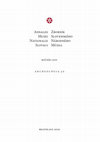
In: Zborník Slovenského národného múzea CXIV, Archeológia 30, 2020
Late Hallstatt settlement site 511/2019 from Kralice na Hané (Prostějov district). Article on whe... more Late Hallstatt settlement site 511/2019 from Kralice na Hané (Prostějov district). Article on wheel-turned pottery of the Vekerzug culture. Our study deals with the cultural and spatial analysis of finds from the hitherto unpublished settlement site no. 511/2019 from Kralice na Hané in the Prostějov district. In the set of items studied,
in addition to a small number of significant items of Hallstatt pottery of the phases Ha D2 and Ha D3 (for example a sharply profiled bowl, a cup with a so-called horned handle and graphite pots with an S-shaped upper part), there was also the handle of a small jug or jug made on a wheel. Such small jugs are one of the most characteristic pottery fills of the Vekerzug culture. The wheel-turned pottery from Kralice na Hané was subsequently examined in the context of other Moravian sites as well as the sites of other local groups of the Eastern Hallstatt culture, from which we have finds of the Vekerzug culture. Their occurrence in the whole eastern Alpine region is one of the expressions of integration processes between the Vekerzug and Eastern Hallstatt cultures during the phase Ha D. The remaining pottery material from the site analysed documents the contacts of the Prostějov region with the neighbouring areas of south-western Slovakia, Lower Austria and north-western Hungary during the Late Hallstatt period. Particular attention was paid in the study to selected aspects of the research into the wheel-turned pottery of the Vekerzug culture, such as questions concerning the origin of the production technology of this pottery, the phenomenon of Vekerzug potters imitating certain eastern Greek pottery shapes or searching for prototypes of small jugs.
Keywords: Moravia, Late Hallstatt Period, Kralice na Hané, Vekerzug culture, Eastern Hallstatt culture, wheel-turned pottery, Late Hallstatt pottery, interregional contacts
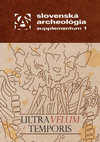
In: A. Kozubová – E. Makarová – M. Neumann (ed.): Ultra velum temporis. Venované Jozefovi Bátorovi k 70. narodeninám. Slovenská archeológia – Supplementum 1. Nitra 2020, 349–360, 2020
From Nearby or Faraway? To the Hallstatt Findings of the Eastern Type from Moravia. In the presen... more From Nearby or Faraway? To the Hallstatt Findings of the Eastern Type from Moravia. In the present study, we deal with relatively numerous findings of eastern type from Moravia, which are dated to the whole stage HD. Providing a more complex overview of those findings was at the centre of our interest, focused mainly on their cultural-spatial analysis and possible interpretations of their occurrence in Moravia. Four groups of their origin were identified. The analysis of these findings did not confirm the claims that their occurrence in Moravia is connected with the collapse of local groups of the East Hallstatt culture.
Keywords: Moravia, Hallstatt period, Early La Tène, East Hallstatt culture, Vekerzug culture, interregional contacts





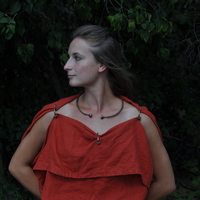
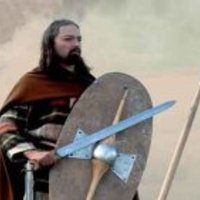
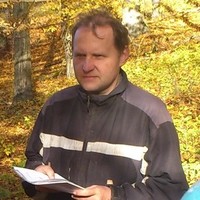


Uploads
Books by Anita Kozubová
Edited books by Anita Kozubová
Monographic papers by Anita Kozubová
Keywords: Bohemia, Hallstatt and Early La Tène periods, Hallstatt culture, Vekerzug culture, weapons, jewellery, wheel-turned pottery, eastern contacts.
Keywords: Eastern Hungary, Southern Slovakia, Hallstatt and Early La Tène periods, Vekerzug culture, weapons, horse harness, graves, armament schemes, interregional contacts, innovations.
Keywords: Moravia, Hallstatt period, East Hallstatt culture, Vekerzug culture, jewellery, weapons, pottery, finds of the eastern type, interregional contacts
Keywords: East Hungary, Southwest Slovakia, Hallstatt and Early La Tène Periods, Vekerzug culture, graves with weapons and horse harnesses, grave accesories, funerary customs, schemata of weaponry, male costumes, social aspect, innovations
Keywords: Vekerzug culture, Eastern influences, Hallstatt and Early La Tène Periods, analysis of finds, funerary cu-stoms, costumes, innovations, interregional contacts
Keywords: cemeteries in Chotín, Hallstatt Period, Early La Tène Period, hairrings, Vekerzug Culture, grave accessories, graves with hairrings, female costumes, social aspect
Papers by Anita Kozubová
Keywords: Eastern Hungary, Southern Slovakia, Hallstatt and Early La Tène periods, Vekerzug culture, fibulae, costumes, interregional contacts, mobility
Present-day people from England and Wales harbour more ancestry derived from Early European Farmers (EEF) than people of the Early Bronze Age1. To understand this, we generated genome-wide data from 793 individuals, increasing data from the Middle to Late Bronze and Iron Age in Britain by 12-fold, and Western and Central Europe by 3.5-fold. Between 1000 and 875 BC, EEF ancestry increased in southern Britain (England and Wales) but not northern Britain (Scotland) due to incorporation of migrants who arrived at this time and over previous centuries, and who were genetically most similar to ancient individuals from France. These migrants contributed about half the ancestry of Iron Age people of England and Wales, thereby creating a plausible vector for the spread of early Celtic languages into Britain. These patterns are part of a broader trend of EEF ancestry becoming more similar across central and western Europe in the Middle to Late Bronze Age, coincident with archaeological evidence of intensified cultural exchange2–6. There was comparatively less gene flow from continental Europe during the Iron Age, and Britain’s independent genetic trajectory is also reflected in the rise of the allele conferring lactase persistence to ~50% by this time compared to ~7% in central Europe where it rose rapidly in frequency only a millennium later. This suggests that dairy products were used in qualitatively different ways in Britain and in central Europe over this period.
in addition to a small number of significant items of Hallstatt pottery of the phases Ha D2 and Ha D3 (for example a sharply profiled bowl, a cup with a so-called horned handle and graphite pots with an S-shaped upper part), there was also the handle of a small jug or jug made on a wheel. Such small jugs are one of the most characteristic pottery fills of the Vekerzug culture. The wheel-turned pottery from Kralice na Hané was subsequently examined in the context of other Moravian sites as well as the sites of other local groups of the Eastern Hallstatt culture, from which we have finds of the Vekerzug culture. Their occurrence in the whole eastern Alpine region is one of the expressions of integration processes between the Vekerzug and Eastern Hallstatt cultures during the phase Ha D. The remaining pottery material from the site analysed documents the contacts of the Prostějov region with the neighbouring areas of south-western Slovakia, Lower Austria and north-western Hungary during the Late Hallstatt period. Particular attention was paid in the study to selected aspects of the research into the wheel-turned pottery of the Vekerzug culture, such as questions concerning the origin of the production technology of this pottery, the phenomenon of Vekerzug potters imitating certain eastern Greek pottery shapes or searching for prototypes of small jugs.
Keywords: Moravia, Late Hallstatt Period, Kralice na Hané, Vekerzug culture, Eastern Hallstatt culture, wheel-turned pottery, Late Hallstatt pottery, interregional contacts
Keywords: Moravia, Hallstatt period, Early La Tène, East Hallstatt culture, Vekerzug culture, interregional contacts
Keywords: Bohemia, Hallstatt and Early La Tène periods, Hallstatt culture, Vekerzug culture, weapons, jewellery, wheel-turned pottery, eastern contacts.
Keywords: Eastern Hungary, Southern Slovakia, Hallstatt and Early La Tène periods, Vekerzug culture, weapons, horse harness, graves, armament schemes, interregional contacts, innovations.
Keywords: Moravia, Hallstatt period, East Hallstatt culture, Vekerzug culture, jewellery, weapons, pottery, finds of the eastern type, interregional contacts
Keywords: East Hungary, Southwest Slovakia, Hallstatt and Early La Tène Periods, Vekerzug culture, graves with weapons and horse harnesses, grave accesories, funerary customs, schemata of weaponry, male costumes, social aspect, innovations
Keywords: Vekerzug culture, Eastern influences, Hallstatt and Early La Tène Periods, analysis of finds, funerary cu-stoms, costumes, innovations, interregional contacts
Keywords: cemeteries in Chotín, Hallstatt Period, Early La Tène Period, hairrings, Vekerzug Culture, grave accessories, graves with hairrings, female costumes, social aspect
Keywords: Eastern Hungary, Southern Slovakia, Hallstatt and Early La Tène periods, Vekerzug culture, fibulae, costumes, interregional contacts, mobility
Present-day people from England and Wales harbour more ancestry derived from Early European Farmers (EEF) than people of the Early Bronze Age1. To understand this, we generated genome-wide data from 793 individuals, increasing data from the Middle to Late Bronze and Iron Age in Britain by 12-fold, and Western and Central Europe by 3.5-fold. Between 1000 and 875 BC, EEF ancestry increased in southern Britain (England and Wales) but not northern Britain (Scotland) due to incorporation of migrants who arrived at this time and over previous centuries, and who were genetically most similar to ancient individuals from France. These migrants contributed about half the ancestry of Iron Age people of England and Wales, thereby creating a plausible vector for the spread of early Celtic languages into Britain. These patterns are part of a broader trend of EEF ancestry becoming more similar across central and western Europe in the Middle to Late Bronze Age, coincident with archaeological evidence of intensified cultural exchange2–6. There was comparatively less gene flow from continental Europe during the Iron Age, and Britain’s independent genetic trajectory is also reflected in the rise of the allele conferring lactase persistence to ~50% by this time compared to ~7% in central Europe where it rose rapidly in frequency only a millennium later. This suggests that dairy products were used in qualitatively different ways in Britain and in central Europe over this period.
in addition to a small number of significant items of Hallstatt pottery of the phases Ha D2 and Ha D3 (for example a sharply profiled bowl, a cup with a so-called horned handle and graphite pots with an S-shaped upper part), there was also the handle of a small jug or jug made on a wheel. Such small jugs are one of the most characteristic pottery fills of the Vekerzug culture. The wheel-turned pottery from Kralice na Hané was subsequently examined in the context of other Moravian sites as well as the sites of other local groups of the Eastern Hallstatt culture, from which we have finds of the Vekerzug culture. Their occurrence in the whole eastern Alpine region is one of the expressions of integration processes between the Vekerzug and Eastern Hallstatt cultures during the phase Ha D. The remaining pottery material from the site analysed documents the contacts of the Prostějov region with the neighbouring areas of south-western Slovakia, Lower Austria and north-western Hungary during the Late Hallstatt period. Particular attention was paid in the study to selected aspects of the research into the wheel-turned pottery of the Vekerzug culture, such as questions concerning the origin of the production technology of this pottery, the phenomenon of Vekerzug potters imitating certain eastern Greek pottery shapes or searching for prototypes of small jugs.
Keywords: Moravia, Late Hallstatt Period, Kralice na Hané, Vekerzug culture, Eastern Hallstatt culture, wheel-turned pottery, Late Hallstatt pottery, interregional contacts
Keywords: Moravia, Hallstatt period, Early La Tène, East Hallstatt culture, Vekerzug culture, interregional contacts
In the present study, we deal with relatively numerous bone, antler and tooth artifacts of the Vekerzug culture, which come mainly from graves. Their settlement findings are yet less frequent because of limited state of publishing. Providing a more complex overview of these finds was at the centre of our interest, focused mainly on their cultural-spatial analysis, identifying the possible function of some types of artifacts and the analysis of decorative motifs on some bone/antler objects. In the Vekerzug culture, bone and antler artifacts are typological though less varied, but some of them like decorated hollow cylindrical objects, iron knives with a zoomorphic and/or geometric ornaments on the bone/antler grip and two-piece razors are its typical feature. Some types of weapons and their parts, horse harnesses, tools and toilet instruments were made of bone and antler. Pieces of bone and animal teeth were sometimes used for personal adornments. In the Vekerzug culture, the occurrence of some types of bone/antler artifacts we can associate with the influences from the eastern Hallstatt cultural milieu, while the eastern relations are rarely observed here.
Keywords: Vekerzug culture, Hallstatt and Early La Tène periods, East Hungary, South Slovakia, antler, animal bones and teeth, analysis of finds, cemeteries and settlements
Animal bones from the graves and settlements were mainly represented by cattle, sheep/goats, pigs, occasionally horses and their interpretation in graves as the remains of meat dishes is highly probable.
Keywords: Eastern Hungary, Southwestern Slovakia, Eger-Nagy Eged, Modrany, Bučany, Hallstatt and Early La Tène Periods, Vekerzug culture, Eastern Hallstatt culture, jewellery, weapons, horse harness, ceramic
from the burial ground of Chotín IA and IB in south-western Slovakia, one of the best-published cemeteries of the Vekerzug Culture where anthropological analysis is available. We have attempted to identify those graves in the archaeological material, to define children and juveniles as such, and subsequently tried to reconstruct their status
in local Vekerzug society. Based on the occurrence of rich child and juvenile graves, we may conclude that children
and juveniles could also have belonged to the group with the highest social rank. Therefore, rich child graves may
likely be testimony of ancestral social status.
the La Tène Period.